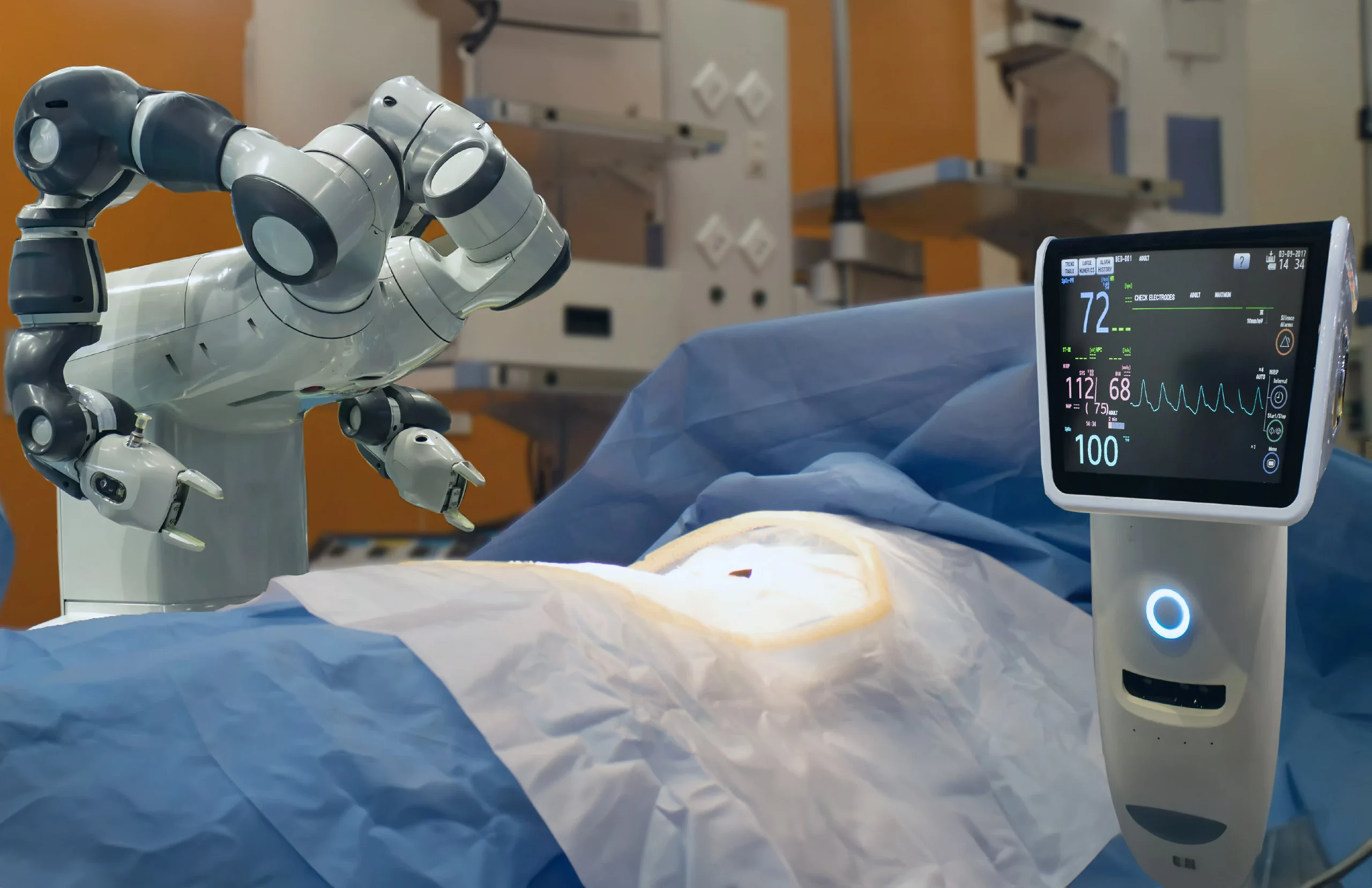If you work in the medical device industry, it’s important to be familiar with regulations that govern these devices. The medical industry relies heavily on following rules and guidelines to ensure everything is done in compliance with the law. Understanding and adhering to these regulations is crucial for anyone involved in serving this industry.
Whatever technological advancement and innovation you can bring to the medical device industry (whether it is being able to transform the industry operations or it is powerful enough to put the care delivery professionals years ahead of the time), must go through complex compliances and regulations procedures because the bottom line is the safety and effectiveness of the medical devices.
Here is the overview of medical device regulations you need to know before beginning the medical device design process.
Medical Device Regulations in the USA
In the USA, medical devices are regulated by the Food and Drug Administration (FDA) with an aim to ensure safety and effectiveness of the devices. The Center for Devices and Radiological Health (CDRH) is an FDA component and looks after this program.
Medical devices are classified into three categories based on the associated risk, namely: Class I, II and III. Class I devices will have the least associated risk while class III devices will have the highest associated risk. Accordingly, regulatory control surges from Class I devices to Class III devices.
With respect to that, most Class I devices are exempted from 510(k) premarket notification submission, while most Class II devices are submitted for premarket notification. On the other hand, Class III devices need to go through the Premarket Approval Application (PMA) and other class III devices, which are exempted from PMA must submit a 510(k) notification to FDA.
Types of FDA Regulations for Medical Devices
Let’s look at the basic regulations that US-based manufacturers and distributors must comply with and understand them one by one.
- Establishment Registration & Medical Device Listing – 21 CFR Part 807
- Premarket Notification 510(k) – 21 CFR Part 807 Subpart E
- Premarket Approval (PMA) – 21 CFR Part 814
- Investigational Device Exemption (IDE) for clinical studies – 21CFR Part 812
- Quality System (QS) regulation 21 CFR Part 820
- Labeling requirements – 21 CFR Part 801
- Medical Device Reporting (MDR) – 21 CFR Part 803
1. Establishment Registration & Medical Device Listing – 21 CFR Part 807
All the medical device manufacturers and distributors must register their organization with FDA to sell their devices. Unless it is granted by the FDA, all the establishments should be registered electronically using the FDA Unified Registration and Listing System (FURLS system).
It is mandatory to verify registration information every year. Although the FDA provides flexibility for verification, you can verify your information anytime from October 1st to December 31st of every year. FDA charges a significant amount of fees for registration and revises the fees periodically.
Additionally, foreign manufacturers must have a U.S. Agent. They may hire a U.S. agent as their official correspondent, but that is totally up to the foreign manufacturer. They only need to provide primary details of the U.S. agent such as name, number, email ID and physical address. The U.S agent needs to confirm that s/he has agreed to act as an official correspondent for the manufacturer. If the designated U.S. agent fails to confirm within 10 business days, the concerned foreign manufacturer needs to designate a new agent.
Under medical device listing requirement, organizations also need to provide details of devices they are manufacturing. They need to provide a premarket submission number for the device such as 510(k), PMA (Premarket Approval), HDE (Humanitarian Device Exemption), etc. to FDA if it requires premarket procedures.
For #MedicalDevice listing, you must provide a premarket submission number for the device such as 510(k), PMA, HDE, etc. to #FDA.
2. Premarket Notification 510(k) – 21 CFR Part 807 Subpart E
All the medical devices which are intended for human use regardless of its class must submit premarket notification excepting two cases:
- Devices for which Premarket Approval Application (PMA) is not required
- Devices which are exempted from 510(k) notification of the FDA considering applied limitation
Here, most of Class I devices are exempted from 510(k) notification, while some of these devices need to submit the notification. Manufacturers must submit 510(k) notification for all Class II devices, which do not need to go through Premarket Approval.
For each device with 510(k) notification submission, a manufacturer must receive a clearance order before they commercially start distributing the device. The FDA provides this order in the form of a letter and specifies that the device is substantially equivalent (SE) and is safe and effective as the existing legally marketed devices. Generally, it takes 90 days to receive a clearance order from the FDA. However, it depends on the information submitted by the manufacturer.
To mark a device as substantially equivalent, manufacturers need to compare their device with one or multiple existing devices and provide suitable facts to support the claim. The base device selected for the comparison is called “predicate”. Any available device which does not violate any of the FDA acts can be used as a predicate, including devices which recently cleared 510(k) notification.
So the question is how does the FDA decide that the device is substantially equivalent (SE)? Here is the explanation:
A device is considered as SE in the following two scenarios, while comparing it with the predicate:
- A device has the same proposed use with the same technological features as the predicate.
- A device has the same proposed use as the predicate with different technological features, but that does not raise different questions on safety and effectiveness of the device, and the information submitted by a manufacturer is sufficient enough to validate that the device is at least as safe and effective as the existing legally marketed device.
It seems like the device and predicate are identical, but it’s not. Substantial equivalence is established with respect to the intended use, design, materials, energy used or delivered, manufacturing process, chemical composition, safety, performance, biocompatibility, standards, effectiveness, labeling, and other characteristics, as applicable.
3. Premarket Approval (PMA) – 21 CFR Part 814
Premarket approval is the scientific review process designed by the FDA for the safety and effectiveness evaluation of medical devices. All the Class III devices must go through PMA considering associated high risks.
Also, several Class II devices need to go through PMA. There are two scenarios where PMA is mandatory for a Class II device.
- If a manufacturer thinks that their device is not substantially equivalent and cannot find suitable predicate; and
- Manufacturer applies for 510(k) submission with the predicate, but it gets rejected by FDA stating that the device is not substantially equivalent.
Premarket approval is a tough requirement where the applicant must get an approval for PMA application before starting any marketing activities. Whether to approve the PMA depends on the provided scientific evidence assuring that the device is safe and effective for the proposed use specified in the application.
HANDPICKED CONTENT
According to the regulation, it should take 180 days to approve or reject the PMA application, but in reality, it takes longer most of the time.
Once the applicant (an individual, organization or organizational unit, association, private or government establishment or any other kind of legal entity) submits the PMA, the FDA will send the application to the appropriate advisory committee for review at a public meeting. The committee will provide the recommendation and facts supporting whether to approve or reject the application.
Once the FDA determines the submission, they notify the applicant that their application has been approved or rejected. And then FDA publishes a notice on their website with the aims of
- Announcing the data on which the decision is based, and
- Providing interested persons an opportunity to petition FDA within 30 days for reconsideration of their decision.
On completion of a successful PMA process, an approval in the form of a private license granting the applicant permission to market the device is released.
4. Investigational Device Exemption (IDE) for Clinical Studies – 21CFR Part 812
Investigational Device Exemption (IDE) is a provision that allows manufacturers to collect device-specific safety and effectiveness data for the proposed device before commercialization, which can be used to support premarket approval application or in some cases for premarket notification submission.
Safety and effectiveness data are collected by monitoring a provisioned device for the intended use. Apparently, IDE is mandatory for devices which are unable to get marketing clearance using 510(k) notification and PMA applications.
There are several base-line requirements to proceed with IDE. It includes:
- an investigational plan approved by an IRB – institutional review board (in case if the study involves a significant risk device, the IDE must also be approved by FDA);
- informed consent from all patients.
- labeling stating that the device is for investigational use only;
- monitoring of the study and;
- all the records and reports.
For 510(k) notification, FDA needs clinical data to provide marketing clearance in very limited cases. An approved IDE application provides rights to lawfully ship the devices for investigation purposes without forcing other FDA needs that are required for device commercialization.
A manufacturer must submit a complete IDE application to FDA. Although, it does not have a pre-determined format, they are bound to imply certain information in the form. Such as – sponsor investigator information, clinical plan overview, investigational plan method and controls information.
5. Quality System (QS) Regulation 21 CFR Part 820
The quality system specifies the regulatory requirements related to the methods, facilities, and controls used for the entire medical device lifecycle, including the purchasing, designing, manufacturing, packaging & labeling, storing, installing and servicing of the devices.
The FDA mandates to establish and follow quality system requirements for manufacturers to ensure that the devices meet applicable requirements and specifications consistently.
The FDA quality system is named as current good manufacturing practices (CGMPs) and forced under part 820 (21 CFR part 820), authorized by section 520(f) and became effective on December 18, 1978.
The #FDA mandates to follow quality system regulations known as #CGMP (current good manufacturing practices) to ensure that #medicaldevices meet regulatory compliance
- (ISO) 9001:1994 “Quality Systems–Model for Quality Assurance in Design, Development, Production, Installation, and Servicing”
- ISO/CD 13485 “Quality Systems–Medical Devices–Supplementary Requirements to ISO 9001
FDA published the part 820 revision on October 7, 1996 (61 FR 52602) and put into effect June 1, 1997.
Considering the multiple types of medical devices, the regulation does not provide “how to’s” for a specific device, but it, in fact, provides a framework that manufacturers need to follow to comply with the regulation.
Also, to ensure that all requirements are followed, FDA inspects all manufacturing facilities as well. Every manufacturer is responsible for establishing the regulatory requirements to make the device safe and effective regardless of the type of device. This regulation applies to all the finished device manufacturers who intend to commercially distribute medical devices in the United States. A finished device is any device that is suitable for use or capable of functioning, whether it is labeled, packaged, or sterilized.
6. Labeling Requirements – 21 CFR Part 801
It is mandatory to apply labels on each device. Labeling contains labels and literature in the form of description and information that accompanies the device usage.
This regulation specifies the requirements in the below form:
- General Device Labeling
- Use of Symbols
- In Vitro Diagnostic Products
- Investigational Device Exemptions
- Unique Device Identification
- Good Manufacturing Practices
- General Electronic Products
FDA defines a label as
‘display of printed, written or graphic matter upon the immediate container of any article…’
and
‘all labels and other written, printed, or graphic matter
(1) upon any article or any of its containers or wrappers, or
(2) accompanying such article’ at when a device is held for sale after shipment or delivery for shipment in interstate commerce.
HANDPICKED CONTENT
Medical Device Design and Development: A Guide for Medtech Professionals
7. Medical Device Reporting (MDR) – 21 CFR Part 803
In several cases where a medical device causes a death or a serious injury or in case of certain device malfunction, it is required to report FDA for the same.
The goal of this regulation is to timely detect and correct problems by identifying and monitoring significant negative effects of a particular medical device. Here are the reporting rules to be followed by manufacturers, importers and medical facility owners:
- Manufacturers: Manufacturers need to report to the FDA using 3500A form when they identify that their device caused death or serious injury. They are also bound to inform the FDA when some serious malfunction happens which may cause a death or a serious injury and there is a possibility that this may happen again.
- Importers: Importers need to inform FDA as well as manufacturers in case of death or injury. While for device malfunction, they need to report to manufacturers only.
- Healthcare Facility: When a facility (hospital, ambulatory surgical facility or nursing home), where a medical device is being used detects that some device would have caused a death, they need to inform FDA and manufacturer as well. It is okay not to report device malfunction, but they can voluntarily inform the FDA about such product malfunctions through MedWatch.
Let’s also look at the primary challenges and emerging trends in the realm of medical device design and development.
Challenges
Regulatory Compliance: The medical device industry operates under strict regulations. Ensuring compliance with regulatory bodies, such as the FDA, EMA, and CFDA, can be a complex and time-consuming process. This includes navigating pathways like the FDA’s 510(k) and PMA, which are essential for market approval.
Risk Management: Managing and mitigating risks is a critical challenge in medical device development. This encompasses technical risks, patient safety concerns, and the potential for legal liabilities, making it a multifaceted endeavor.
Cost Containment: Developing medical devices is often a capital-intensive process. The pressure to control costs is always challenging to any industry.
Interoperability and Connectivity: In an increasingly data-driven healthcare environment, ensuring seamless integration of medical devices with healthcare IT systems and secure data sharing is paramount. Adhering to interoperability standards like HL7 and DICOM is vital for the effective functioning of devices.
Security and Privacy: With the rise of interconnected medical devices, ensuring the security and privacy of patient data has become a growing challenge.
Complexity of Clinical Trials: Demonstrating the safety and efficacy of a medical device through clinical trials can be a time-consuming and expensive endeavor. The complexity of these trials, particularly for innovative devices, presents a significant challenge.
Human Factors and Usability: Designing devices that are user-friendly and safe for both patients and healthcare professionals is a challenge. Human factors engineering is instrumental in addressing this issue.
Global Market Access: Expanding into international markets presents a complex challenge, given the varying regulatory requirements and distinct healthcare practices in different regions.
Trends
Miniaturization and Wearable Devices: There is a noticeable trend towards smaller, portable, and wearable medical devices. These innovations offer patients increased mobility and enable continuous monitoring. Remote Patient Monitoring: Medical devices that facilitate these practices are in high demand.
3D Printing and Rapid Prototyping: 3D printing is gaining traction for rapid prototyping and even manufacturing of certain medical devices, facilitating agile product development.
IoT and Connectivity: The Internet of Things (IoT) is transforming the industry by connecting devices and providing real-time data to healthcare providers for more informed decision-making. Regulatory Harmonization: Regulatory bodies are making efforts to harmonize international standards and regulations, simplifying market access and reducing regulatory burdens for manufacturers.
Sustainability: There is a growing emphasis on designing environmentally friendly medical devices. This includes reducing waste and energy consumption throughout the device’s lifecycle.
User-Centered Design: A user-centered design approach is becoming more prominent, focusing on improving usability for both patients and healthcare providers, ultimately leading to better patient outcomes.
Collaboration and Open Innovation: Cross-industry collaborations, open innovation platforms, and partnerships are fostering the rapid development of medical devices, particularly in emerging areas like digital health. Understanding these challenges and trends is crucial for medical device professionals, as it can guide decision-making, innovation, and regulatory compliance in this dynamic and vital industry. The ability to navigate these challenges and leverage emerging trends is key to developing cutting-edge medical devices that have a positive impact on patient care and healthcare outcomes.
You can refer FDA website for specific information about FDA regulation. However, before you start your medical product development, you must definitely get an overview of the FDA regulations for medical devices.
Looking for more information? Download our research on Medical Device Designers.
eInfochips has hands-on engineering experience in developing FDA Class II and Class III devices for monitoring, diagnostics & imaging, wearable health, and telemedicine. We provide HIPAA compliant engineering solutions and have the required process expertise in IEC 60601-1/2/6, IEC 62304, 510K and ISO 13485. Know more about medical devices engineering services.













